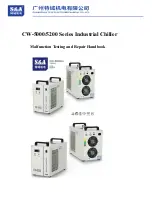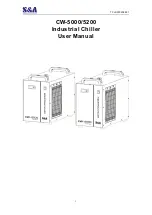
●
WorldPosition
: a pose that defines an extra transformation for elevated lifting
column
●
MoveTarget
: target position of the robot (pose, p[x, y, z, rx, ry, rz]). In the afterGrab
callback, this variable contains the target pose of the box on the pallet where the
robot should move. In the afterRelease callback it contains the pose of the default
waiting position, transformed by the lifting column position. Use this variable in
combination with MountPosition when using a lifting column.
●
MountPosition
: expected mounting position (i.e. lifting column position) at the
moment when the robot is at MoveTarget. When using a "custom path" with lifting
column in Dynamic Positioning mode, it is required to control the lifting column
position from the callback code along with the robot position. The value of
MountPosition is an array with 3 elements [x, y, z] where the first two values are
always zero and reserved for further extensions; the third value is the expected lifting
column height at the moment when the robot is at the MoveTarget position.
●
MovePerformed
: this is a user writable variable to indicate that the robot has been
moved to the MoveTarget position and the program should skip the movement. With
this variable it is possible to implement custom movement from the pickup to the
target position, or back from the target position to the waiting position. Set this
variable to True in either afterGrab or afterRelease, depending on the direction of the
movement that has been performed by user code.
●
TaskCompleted
: this is a read-write boolean variable to indicate that the box(es) are
successfully palletized and the box counter can be incremented. The default value is
normally True, but can be False when a vacuum sensor is installed and vacuum is
not detected at the target position before releasing the boxes. Set this variable to
False to repeat the same box position, e.g. when a project-specific quality check is
implemented and some boxes are moved from the pickup position to a waste bin
instead of being palletized.
Some typical examples of uses for user-defined commands are to insert a shim paper, start
and stop the conveyor, sort out inappropriate boxes to a waste bin, perform custom motion in
very special layouts, control light signals and signal external machines, etc.
Version 2.9.1
© Rocketfarm AS 2021. All rights reserved.
25
Содержание URCap
Страница 1: ...Pally URCap User Manual Version 2 9 1 ...
















































